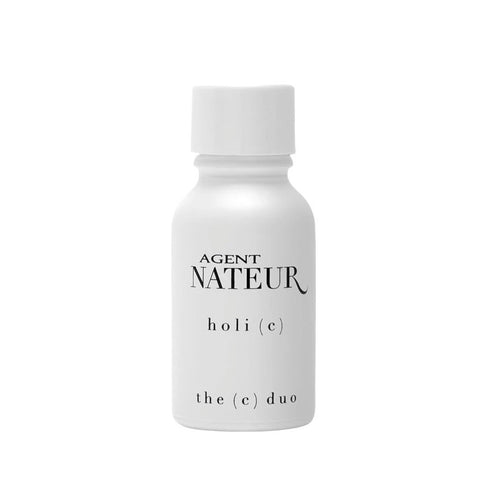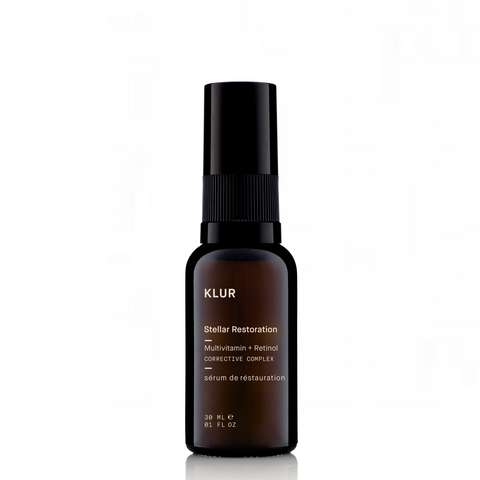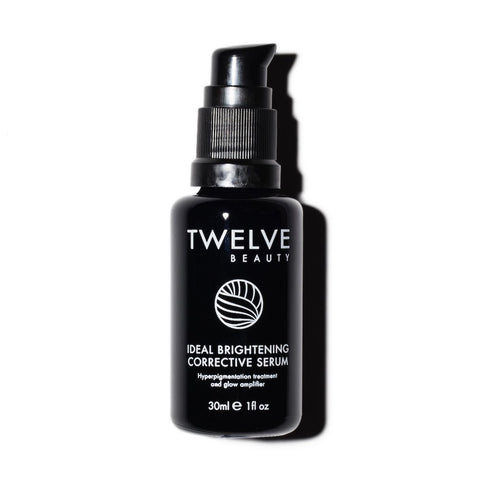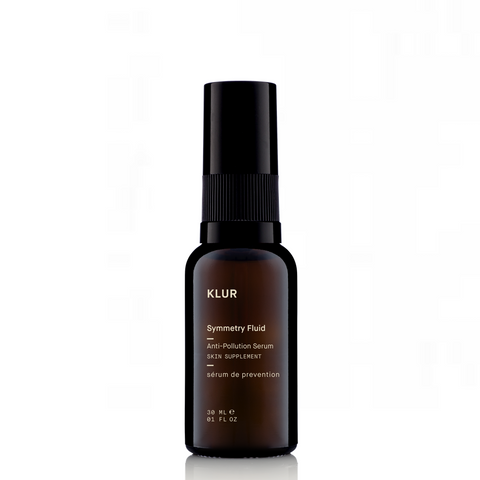Free shipping for HK orders HK$600+
Comprehensive Guide to Reverse Sun Damages & Photoaging
July 06, 2021
We all know that being in the sun can tan the skin, or even cause sun spots, but sun damage is not just about these visible darkening of the skin (or lack there of). UV exposure may account for up to 80% of visible signs of skin aging, aka photoaging, including pigmentation, wrinkles, fine lines, dryness sagging, and loss of elasticity, whilst sun damages at its worse can result in skin cancer.
____________________________________
How Does the Sun Damage the Skin?
Of the UV solar radiation that reaches the earth, about 5% is UVB, and up to 95% is UVA. While UVB is responsible for burning your skin, UVA, which is undeterred by cloudy skies or glass, penetrates deep into the skin and causes cumulative damages to our DNA at the cellular level. These damages may be initially invisible to the eye, but the fact that they are affecting everything from the surface to the deepest layers of the skin is indisputable, and it can take years for sun damage to become visible because of the depth at which the UV rays damage skin cells, i.e. the sun damages from your teenage years will start showing up in your late 20s and 30s, and those in your 20s and 30s will greatly accelerate the appearance of signs of aging in your 40s and 50s.
A lot of people tend to perceive sun-kissed skin as healthy looking, or freckled as cute. Guess what, tanned skin and freckles are injured skin. Period. UV light exposure causes an inflammatory reaction in the skin, which triggers signals to be sent to the melanocytes as part of the body’s natural immune response. The melanocytes then overproduce the brown melanin pigment, resulting in visible tanned skin and freckles. In other words, it is a sign that your body is trying to protect against further DNA damage; and if your skin is burnt and peeling, it is a sign that the body is ridding itself of damaged skin cells.
Besides melanin-related issues, daily UV exposure, even at a low-grade level, can lead to the production of harmful enzymes in the skin that break down collagen and elastic fibers. Combined with the fact that our body produces increasingly fewer hormones and less collagen from the age of about 25, this decline in collagen in our body causes the skin’s epithelial structures (tissue formed by several layers of cells) to weaken, which then thins out the skin and results in sagging and wrinkles.
Speaking about signs of aging, what many people don’t realize is that UVA radiation creates skin-damaging free radicals. These free radicals can lead to damages to all components of a cell, including DNA, proteins, lipids and its membrane, whilst setting off a chain reaction of cellular disruption whereby a healthy cell that is victimised by a free radical transforms into a free radical, ultimately, accelerating the appearance of signs of aging.
Guess what, UV exposure can also cause an increase in a growth factor that promotes the growth of blood vessels in the skin. This is why badly photo-damaged skin can become mapped with veins.
____________________________________
How to Prevent & Reverse Sun Damages & Photoaging ① Sunscreen
Preventing sun damage and photoaging is much easier than reversing it. The first step is to use sunscreen religiously both outdoor or indoor, and avoid sun tanning.
As mentioned above, just because it’s cloudly does not mean you’re not exposed to UV. Whilst UV levels are highest under cloudless skies, and cloud cover generally reduces a person's exposure, light or thin clouds have little effect and may even enhance UV levels because of scattering. Even a long stay in open shade, for example between buildings and under a sun umbrella, may result in sun burns.
Many surfaces also reflect UV radiation and add to the overall UV levels you experience. For instance, grass, soil and water reflect less than 10 per cent of UV radiation, beach sand reflects about 15 per cent, sea foam about 25 per cent, and fresh snow almost doubles a person's UV exposure.
Staying indoor does not mean you could skip sunscreen either. Glasses used typically in car, home and office windows are designed to block most UVB rays, but it does not offer protection from all UVA rays. So even if you’re indoors but as long as you’re close to a window, you still run the risk of UVA exposure and skin damage. In fact, studies have shown that, for those that drive on the left, sun damage is significantly worse on the right face and right arm, and vice versa.
Product Recommendation
TWELVE BEAUTY
Artemisia Power Protection Moisturiser SPF50+ <- Click to shop
____________________________________
How to Prevent & Reverse Sun Damages & Photoaging ② Use Products With Ingredients That Target Photoaging
UV rays can accelerate the breakdown of collagen and elastin, leading to wrinkles and sagging. Ingredients like Mulberry, Cordyceps, Polygonum Aviculare, Broccoli Sprout, Bilberry, and Cilantro, can prevent such daily UV-induced damage, fight free radicals, promote cell regeneration, prevent degradation of collagen and elastin, and reverse photoaging at the cellular level.
Product Recommendation
OUMERE
UV-R™ <- Click to shop
Product Recommendation
EATH LIBRARY
Smooth Operator Purifying Cleansing Gel <- Click to shop
____________________________________
How to Prevent & Reverse Sun Damages & Photoaging ③ Use Vitamin C
Studies have shown that vitamin C, being a potent antioxidant, can protect the skin against UV-induced free radical damage. It also aids in the skin’s natural regeneration process, repairs damaged skin cells, boosts collagen production, and inhibits melanin production which can lighten and prevent dark spots and hyperpigmentation. Thus it is recommended to use in the morning to enhance protection and at night for rejuvenation.
Just remember, while its protection effect is relatively instant, reversing the effects of sun damage takes time. So give the vitamin C formulation at least a few weeks before accessing its effects.
One point to note, however, is that Incorrect use of, or using a form of vitamin C that is not suitable for you, may cause damage to the skin. To understand more about vitamin C, click here and here.
Product Recommendation
AGENT NATEUR
holi(c) The C Duo <- Click to shop
Product Recommendation
MARIE REYNOLDS LONDON
Elixir™ <- Click to shop
____________________________________
How to Prevent & Reverse Sun Damages & Photoaging ④ Don't Be Afraid of Retinol
Ask any dermatologist and they will agree that retinol is one of the few ingredients that can help prevent and reverse sun damages and photoaging.
Collagen and elastin breakdown, wrinkles, texturized skin, hyperpigmentation, dullness, are all signs of UV-induced damage. Being one of the few potent anti-aging ingredients that is widely recognized and studied by both the dermatological and scientific communities, retinol works by literally augmenting the biology of the skin, and activating collagen, elastin and epidermal growth factor receptors, thereby reducing wrinkles and scarring, lightening hyperpigmentation, brightening skin, smoothing skin texture, firming skin, tightening pores, and improving and slowing down other signs of aging. It is also an excellent ingredient to combat acne. In short, retinol literally tells skin cells to make younger functioning cells!
Being such a potent ingredient, there are unfortunately plenty of false information floating around, such as retinol thins the skin and is not suitable for sensitive skin. They are simply not true. We have previously discussed retinol in depth, so check them out here and here.
Product Recommendation
KLUR
Stellar Restoration Corrective Complex <- Click to shop
____________________________________
How to Prevent & Reverse Sun Damages & Photoaging ⑤ Inhibit Tyrosinase & Melanin Activity
Tyrosinase is the enzyme responsible in synthesizing melanin through melanogenesis. By inhibiting its activities and breaking it down and thus downregulating melanin production, you can speed up the fading of existing hyperpigmentation whilst preventing future spots from forming. Ingredients that can inhibit tyrosinase activity includes Sodium Ascorbyl Phosphate, Licorice Root, Niacinamide, Noni, Mallow, Yarrow, Broccoli Sprout, Hawkweed, Daisy, Pearl Powder, Resveratrol, etc.
Product Recommendation
EATH LIBRARY
The Bright Recovery Brightening Overnight Mask <- Click to shop
Product Recommendation
TWELVE BEAUTY
Ideal Brightening Corrective Serum <- Click to shop
____________________________________
How to Prevent & Reverse Sun Damages & Photoaging ⑥ Exfoliate
UV exposure damages skin cells, and in its natural process of healing, the skin will become texturized as it tries to rid itself of damaged cells. The sun can also cause the skin to gradually lose moisture, and slow down cell turnover, making the complexion look dry and dull overall. That's why the pros recommend exfoliation using acid-based products (but only when you are not burnt).
An acid-based product can help improve the appearance of sun-damaged skin by dissolving the bond between dead skin cells. With nothing forcing these cells to stick together, they can be shredded off much quicker and easier. This helps smooth skin texture, even skin tone, fade pigmentation faster, and allow skincare products to penetrate better. If used on a regular basis, they can also increase collagen and hyaluronic acid deposition and synthesis within the dermis, so the skin will appear more plumped, smooth and bouncy!
Scared of acid-based products? There really is no reason to, as long as the right type is chosen (we suggest avoiding glycolic acid). Click here to learn more about the different types of acids.
Product Recommendation
OUMERE
No. 9 Exfoliant <- Click to shop
Product Recommendation
AGENT NATEUR
acid(wash) Lactic Acid Brightening Cleanser <- Click to shop
____________________________________
How to Prevent & Reverse Sun Damages & Photoaging ⑦ Never Forget Antioxidants
Free radicals from UV rays damage the skin by triggering chronic inflammations, as well as breaking down the collagen and elastin fibers in the skin. Although invisible to the eyes, this gradually slows down our skin’s natural rejuvenation process, and appears on the skin in the form of dryness, dullness, loss of elasticity, wrinkles, pigmentation, redness, itchiness, and even chronic conditions like eczema, rosacea, and psoriasis.
This is where topical antioxidants from our daily skincare routine come in. Used in the mornings, they would help fight free radicals we are exposed to during the day; used at nights, they help repair the ongoing damages accumulated during the day, whilst stimulating the our bodies’ own natural production of antioxidants.
- Protects the skin from free radical damages
- Reduce and prevent the appearance of wrinkles
- Firm skin
- Brighten the complexion and lighten pigmentation
- Decrease inflammation level
- Sooth skin and reduce redness and irritations
- Help the skin repair itself
Product Recommendation
KLUR
Symmetry Fluid <- Click to shop
Product Recommendation
MARIE REYNOLDS LONDON
Restore <- Click to shop
Also in The Journal

The Anti-Aging Gold Standard: How Retinol Reshapes The Skin
November 12, 2025
Learn why retinol is the gold standard for anti-aging, how it works, what similar ingredients exist, and some common myths and misconceptions.

The Gut-Skin Connection: The Path to Healthy Skin
October 26, 2025
Acne, eczema, rosacea, and sensitivity can all be linked to the gut health, and even gluten? Learn all about the connection between the gut and the skin.

The Secret to Reversing Skin Aging! How Growth Factors & Peptides Help Turn Back the Clock
October 13, 2025
Tired of wrinkles, sagging skin, lack of elasticity, inflammation, dryness, and even hair loss? Learn how growth factors and peptides reverse skin aging.
+Recent Articles
-
The Anti-Aging Gold Standard: How Retinol Reshapes The Skin
November 12, 2025
-
The Gut-Skin Connection: The Path to Healthy Skin
October 26, 2025
-
The Secret to Reversing Skin Aging! How Growth Factors & Peptides Help Turn Back the Clock
October 13, 2025
-
The Best Ways and Times to Take Different Supplements
August 19, 2025
-
Luxury vs. Budget-Friendly Skincare Products——What Are Their Differences?
August 06, 2025
-
How to Prevent and Improve Post-Inflammatory Hyperpigmentation (PIH)
July 10, 2025
-
How to Prevent and Improve Post-Inflammatory Erythema (PIE)
July 08, 2025
-
The Ultimate Cleansing Guide to Improve Skin Conditions
June 03, 2025
-
Do You Have Sugar Face? How Does Sugar Affect Our Skin and Appearance?
May 20, 2025
-
Do You Have Gluten Face? How Does Gluten Affect Our Skin and Appearance?
April 15, 2025
Subscribe to get skincare knowledge delivered to your inbox!














